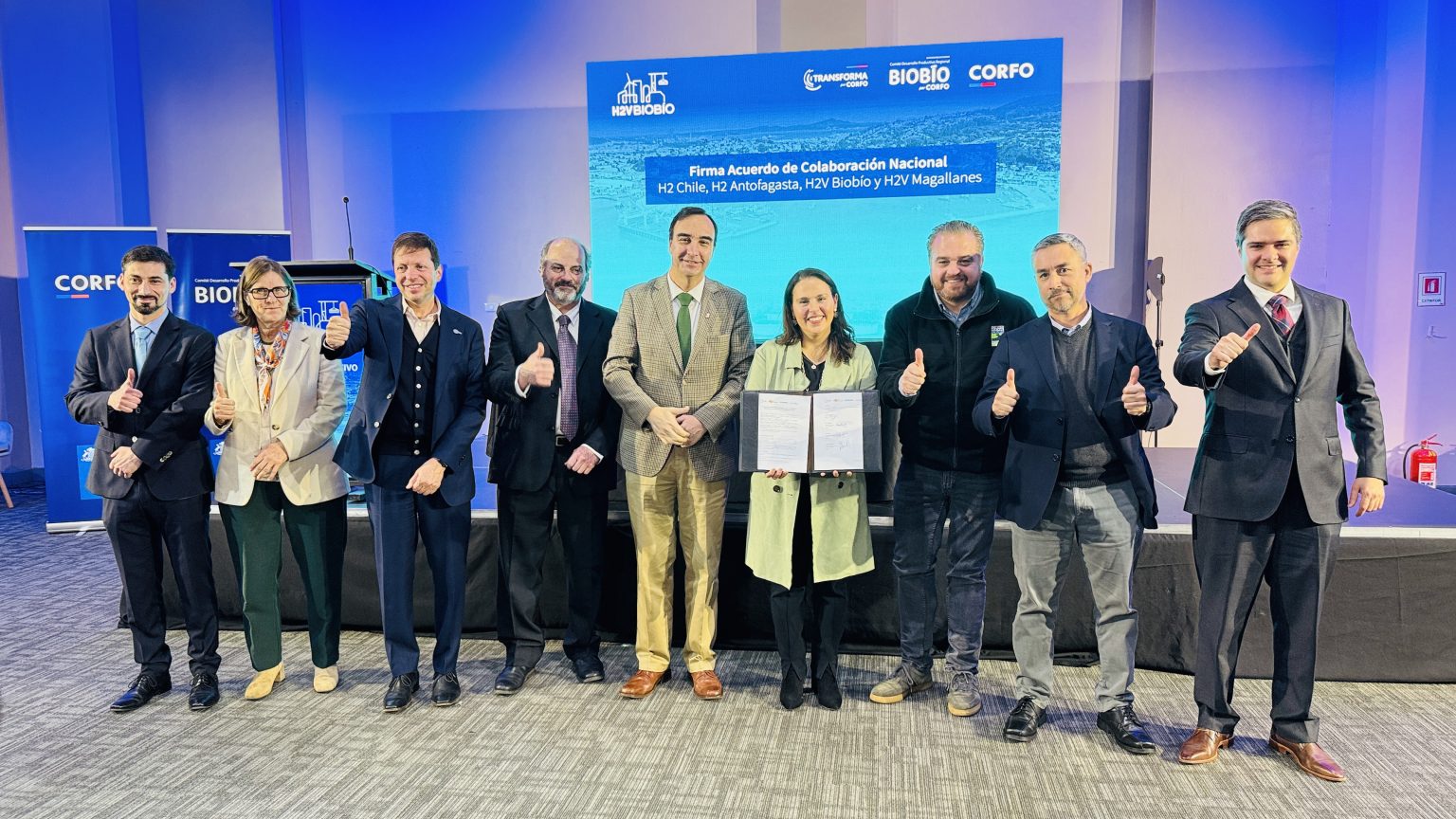
The agreement was signed by the Regional Strategic Programs of H2v in Biobío, Antofagasta, and Magallanes, together with H2 Chile.
The Second Session of the Board of Directors of the Biobío Regional Strategic Green Hydrogen Program (H2V Biobío) was held in Talcahuano, where an unprecedented National Collaboration Agreement was signed, marking a milestone in territorial coordination for the development of green hydrogen in Chile.
The agreement was signed by the hydrogen programs promoted by Corfo (H2V Biobío, H2 Antofagasta, and H2V Magallanes) together with the Chilean Hydrogen Association (H2 Chile), sealing an interregional commitment to build a coherent, decentralized, and complementary national strategy capable of projecting Chile as a global leader in this new clean energy economy.
The event was attended by the Undersecretary of Energy, Luis Felipe Ramos, who stated that, in terms of H2V, “we are developing all the necessary pillars for the advancement of this industry at the national level. A national action plan, infrastructure, and environmental standards, among others. In addition, the territories are also working on the basis of their own roadmaps due to the potential of each territory.”
Region as an industrial hub
The governor of Biobío, Sergio Giacaman, highlighted this interregional relationship and the spirit of collaboration to promote an industry in which the Biobío Region is emerging as an important industrial hub. Meanwhile, the governor of Magallanes, Jorge Flies, pointed out the importance of public and private sector participation, as well as the role of Corfo with its various Transforma programs in conjunction with the Ministry of Economy and Energy.
Roberta Lama Bedwell, executive director of the Corfo Biobío Committee, emphasized: “This is a twofold opportunity because we are not only showcasing the progress of our Regional Strategic Program in its roadmap and the work of the Governance Committee. We are also inviting various national stakeholders and the Strategic Programs of Antofagasta and Magallanes, as well as H2 Chile, to sign a collaboration agreement to work together and take advantage of the comparative advantages we have as a country.”
Likewise, the executive director of H2 Chile, Marcos Kulka, who was also present at the event, said that for Chile “it is critical that this industry be developed based on the capabilities of the country’s various regions, especially Antofagasta, Magallanes, and Biobío. We are a country that must continue to develop everything it can from its territories with a joint strategic vision, but with territorial identity, and from H2 Chile we will make that connection with the world.”
Interregional collaboration
This national agreement seeks to strengthen regional action plans, optimize public and private resources, share technical knowledge, and coordinate efforts to accelerate the development of green hydrogen in the country, while respecting the particularities and competitive advantages of each macro-zone.
Javier Soubelet, manager of the H2V Biobío Program, emphasized that “this agreement marks a fundamental step toward accelerating the development of green hydrogen from the regions, sharing capabilities and lessons learned that will allow us to move forward more quickly and with a sense of territory. Biobío, Antofagasta, and Magallanes have different realities, but common challenges: building a sustainable, complementary industry with local value that will enable Chile to position itself as a global leader in this new hydrogen economy.”
The session included a panel discussion entitled “Clean hydrogen in Biobío: roadmap and coordination with Antofagasta and Magallanes in an integrated national strategy,” led by representatives of regional programs, aimed at projecting how local experiences and advances can converge in a national policy for a fair and efficient energy transition.
Source: Trade Digital News.